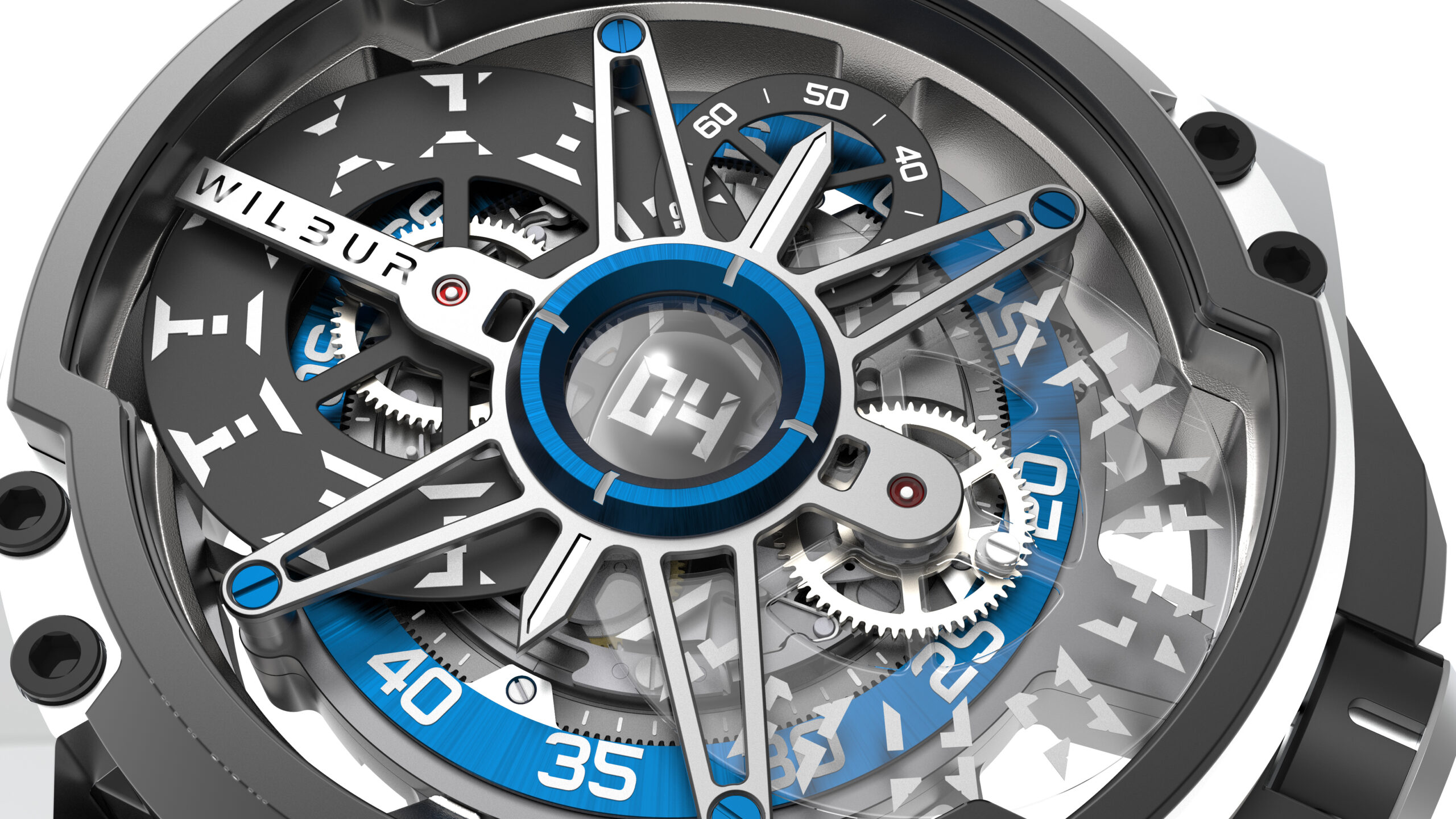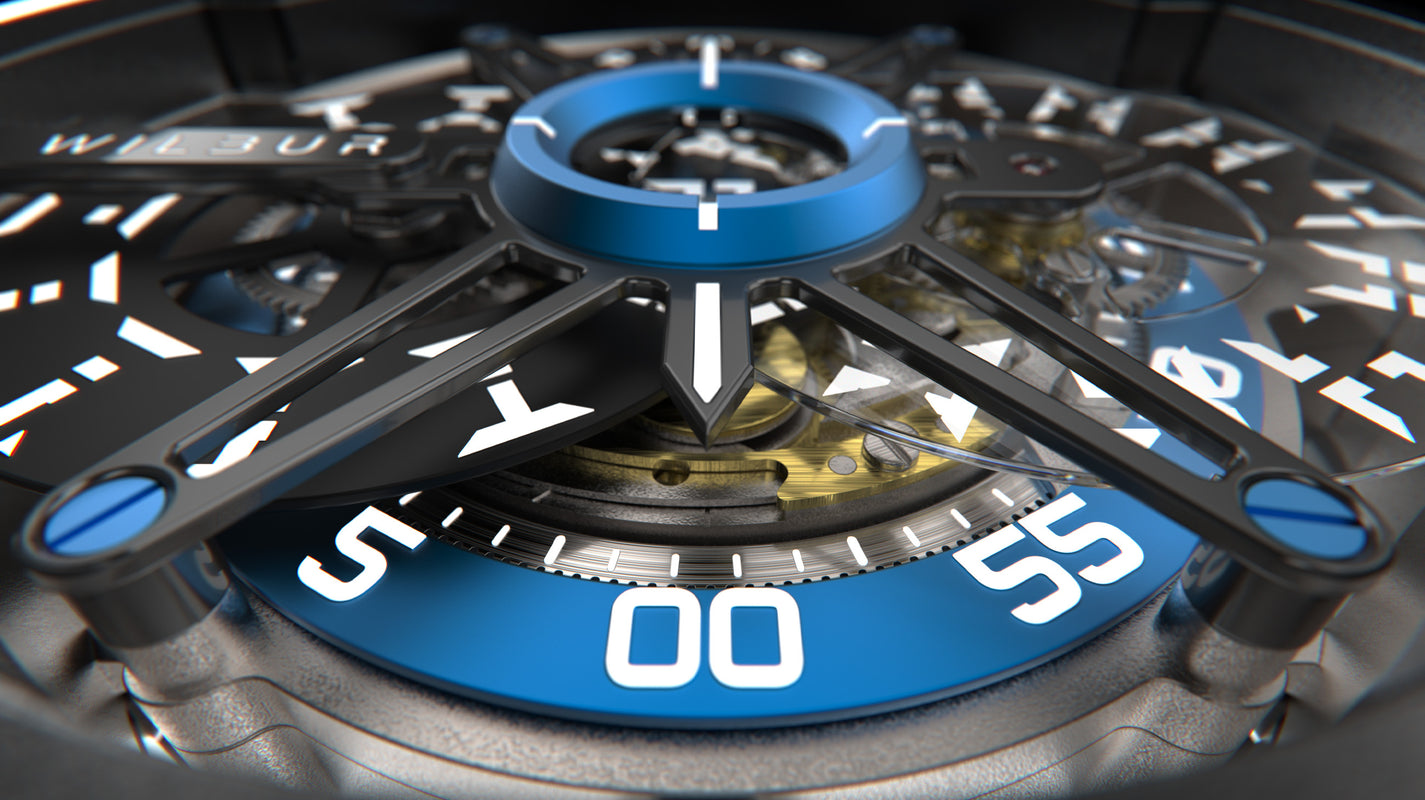 Sponsored post presented on aBlogtoWatch for advertiser
Sponsored post presented on aBlogtoWatch for advertiser
Recently, ABTW caught up with Jason Wilbur, founder of WILBUR Watches. Since our last conversation with Jason in 2021, the automotive-designer-turned-watch-mad-scientist has been hard at work building up the brand’s collection. We picked his brain about design inspiration, cars, and the forthcoming LEO “superwatch.” Read on!
ABTW: Let’s start by talking a little bit about the yin and yang of creativity and technicality that exists in automotive design and watch design. You’ve talked before about your experience growing up tinkering and fixing things and the way that shaped your technical mindset. When it comes to the creative mindset, did you have experiences like that early on that helped flex those creative muscles?
WILBUR: Even now, I pressure myself to not let my technical experience drive too much of my initial creative processes. If you let that happen, you start to do what you know will work because you know what’s supposed to work and it’s easy to push risky ideas aside for the sake of technical guarantees. So instead, I focus first on doing what feels good and making something that has emotional value, it becomes about creating for the sake of creating… which is what children do, right? They create for the sake of creating because it’s the exploration process that generates new ideas and feeds the learning cycle. It’s basically a mental jungle gym. It allows you to flex the emotional aspects of your brain, test your boundaries, and wander into corners you haven’t wandered into before. That’s something that people do physically all the time for themselves, like at the gym. But with our brains, we don’t really do it that often.
I was told when I was a little kid to question everything. So, I questioned everything from an authoritative standpoint… [That] has always been my approach: I want to try it…. Instead of getting an expected, perfect result because somebody’s done it before, I’d rather try it myself even if I end up face-first in the mud. It’s part of being alive and testing the limits of things.
People always ask me, “Why do you want to make crazy things?” Well, I don’t always want to make crazy things… but I always knew that I needed to try to do something different, even if it was going to be a total disaster. It’s a cliche in a way, but if you set out to make something that everybody likes, you’ll make something nobody loves. [For me] it was about… seeing how far you can go pushing the limits of things. But at the same time, I wanted to know what the rules were. I never tried to ignore the processes that I saw around me. It was never about improving something, it was just about making it mine.

ABTW: That expression you said, “If you set out to design something that everybody likes, you’ll end up with something no one loves,” connects to the “tightrope” that a lot of watch brands have to walk because watchmaking is now a global enterprise. Do you think, largely speaking, that there’s no more room for creativity in watchmaking? Or has that need to play it safe with design led to watch brands picking the low-hanging fruit?
WILBUR: I think there’s a ton of room for creativity when the initial purpose of a product is no longer relevant. Not irrelevant, but when the original design is no longer the main purpose. Like with cell phones; the second that nobody needed to know what time it was from their watch is the second it became an opportunity for creating sculpture and artwork that’s inspired by what watches used to be. At that point, you didn’t need a watch to be 100% about telling time.
That doesn’t mean that some brands aren’t all about that, right? 100% legibility and studying those things can be somebody’s method. I would never turn my nose up at another brand. because I don’t know what their method is! I see IWC, for example, and from an artistic standpoint, I look at them and think, “That’s really just not very exciting at all. It looks like the average of everything together.” But then I look at it more… and I think, “Wow,” because they probably thought about exactly how big a number should be to be completely legible. And how to make it perfectly sized for everybody’s wrist. And then I realize there’s something so pleasing about a dial that just isn’t pushing limits in certain directions. There’s something so pleasing about that because designing that is a challenge, as well.
What I do challenge, though, is a “mentality of fear” within the industry. If… you can tell that [the industry] wants to do something but just can’t do it, that’s where I criticize it. There are brands out there that are trying to do the simplest possible thing and if that’s what their goal is, then they should do that. But when the design is all about pleasing other people, and that’s all they’re trying to do, they often get so confused by it. They’re so disconnected from the customer that they just start doing what everybody else does or start trending that way. To me, that’s where I think the industry is hurting.
There are people who are confident in what they’re making, and that’s what I respect. Even if it’s not something I would put on my wrist, I think that if somebody is out there willing to risk it all and do something all the way — that’s what I respect. Do it all the way, or don’t do it at all.
Being a smaller company, we’ve got it hard compared to industry giants like Rolex. If I create something that doesn’t resonate, I’m kind of screwed. Whereas if you’re Rolex, you could try a bunch of different designs and you are still going to have a brand history and plentiful resources to bounce back.
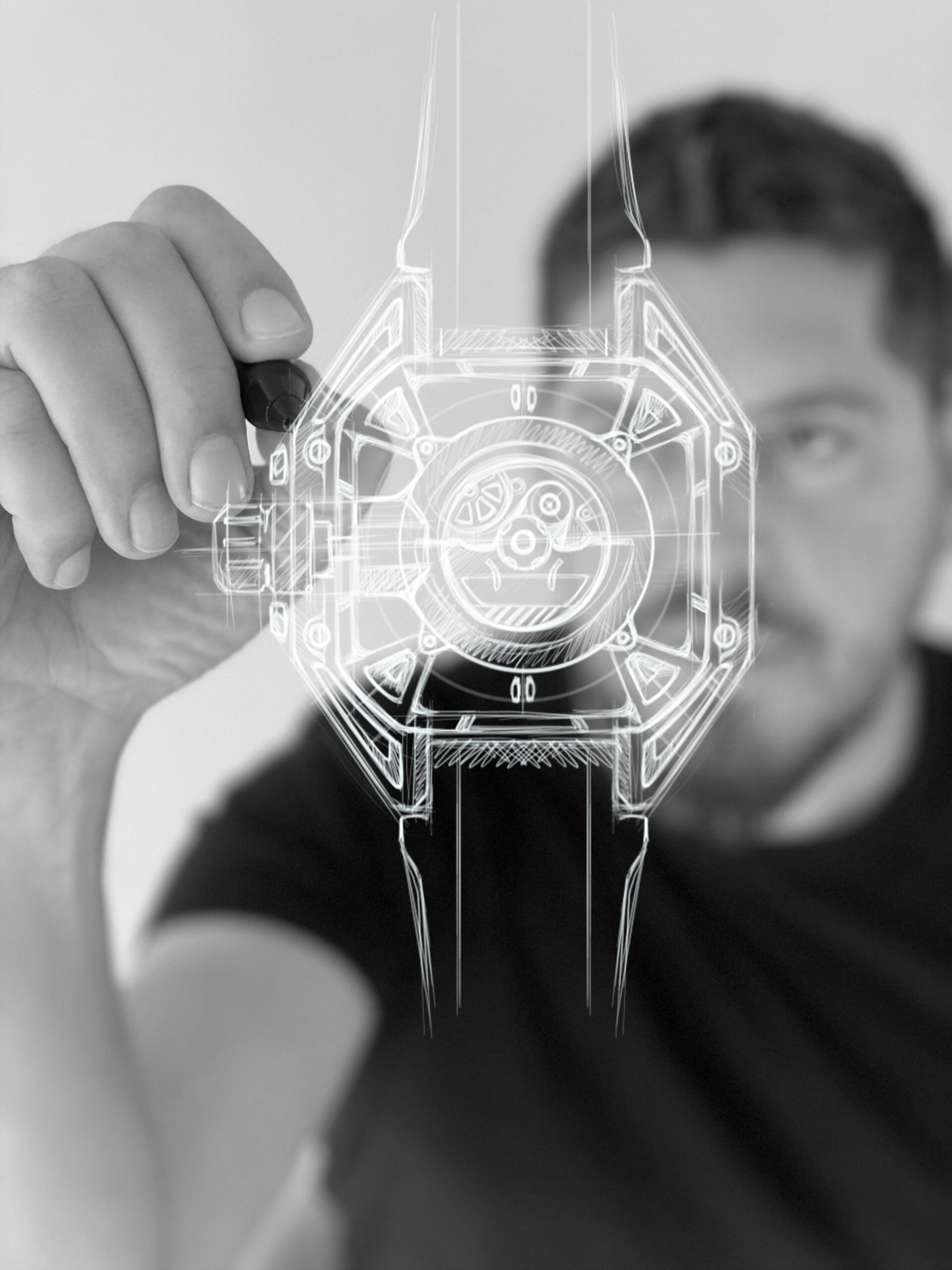
ABTW: Let’s talk about that margin of error between a huge global brand versus that of a brand like WILBUR that’s making several hundred pieces at a time. When it comes to that margin of error, who has a greater ability to take risks with design? You made the case that a big brand can absorb a misstep. But you could also make the case that the same brand that has a 100-year, 200-year reputation to protect might also have a disincentive to take design risks. WILBUR doesn’t have to necessarily worry about that, so how does that play in for you?
WILBUR: I think it has to do with being able to blend respect for the older aspects of the brand, but then make it relevant to today. I mean, look at what Louis Vuitton did. It started to notice that younger people were buying their stuff and adapted. It still has the traditional, foundational aspects of that brand. It wasn’t like Louis Vuitton turned its business model or designs upside-down, or reshaped the brand and called it something different. It is still Louis Vuitton, just younger. Things like that are where you’ve got a good margin of error.
But from a financial standpoint? In terms of the real risk that’s being taken? Being a smaller company, it’s risky, but if that’s the promise you’re making to customers, by saying “I’m going to take risks,” then that’s what is adding value to the product.
That’s what I tell people. I’m taking these risks — And yes, it’s stressful but I’ve made a promise that I’m going to follow through with it. So, I’ve gotta do some things that make me uncomfortable, which means I’m never going to be able to say, “This is the perfect product to make”. The second I do that I should shut down shop. Because for me, I promise to take risks. For a big corporation to do that s***? I think it’s a bad idea. When they talk about margins, they can say, “Let’s do a limited line that’s just 10% of our business. If it runs well, then we can crank up the volume.”
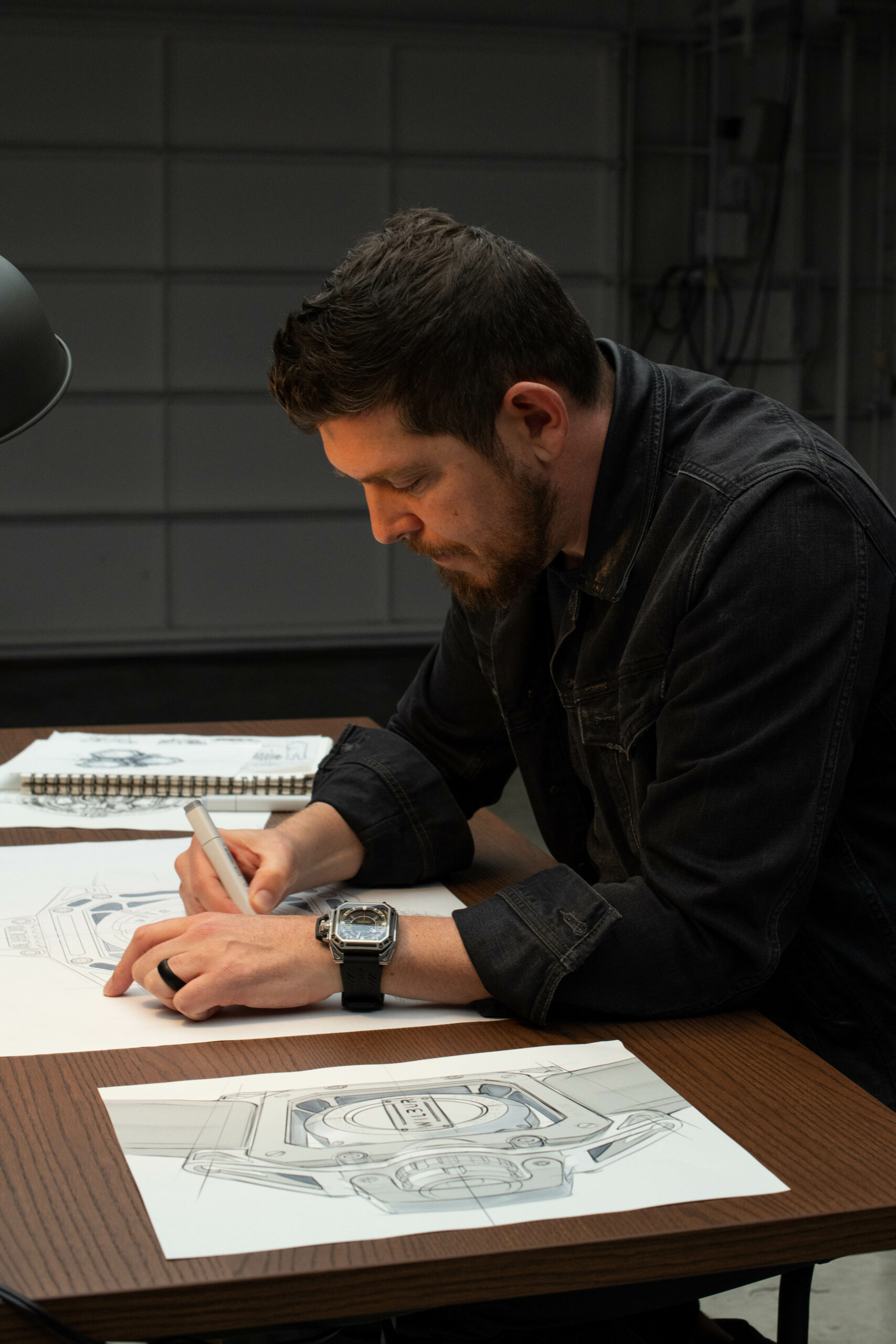
ABTW: You’ve had a lot of experiences before arriving in the world of watches. At what point along that timeline did watches start sort of popping up for you?
WILBUR: Growing up I’ve always had an interest in motorcycles, cars, watches — basically, anything that had a motor or mechanical movement. People would make fun of me because I would wear these old-school Seikos that I would find amongst my grandpa’s stuff. I’d wear those in, like, third grade when everybody else was wearing a Casio digital watch. They’d ask, “Why are you wearing that?” and I’d say, “I don’t know, it’s got gears, you know? It’s cool!” When I was in third grade, it was all about bicycles and cars – all these mechanical things, and I never even pretended to understand it but I knew it was something that had soul.
When it really started hitting me was when I got to Art Center in Pasadena. At RIT, I was doing more fine art and graphic design. And graphic design was always alluring to me. Growing up around snowboarding and skateboarding and music I’d see all sorts of stuff that made me think, “Well, okay, those guys are getting paid to do that, right?” They were able to take their artwork and tell a story and even in a commercial way.
One of the biggest things they told us at Art Center, was… that you can’t just do something because “it’s cool.” Let’s say you did a car design, and now you’re doing a presentation, for a sponsor like Jeep, General Motors, or Honda. All these people would be there, talking to you about your design in a way that’s very connected to a business. If they asked, “Why did you make this particular design choice?” You could never just say, “Because it’s f****** cool” [laughs]. You had to have a reason why. That reason had to come from other inspiration.
Everybody would put watches, or shoes, or snowboard bindings, or whatever on their boards And you know what I did? I designed my own watches and all this other stuff which I’d then point to and say, “See how the watches are like this? Now my cars look like that. See how this shoe is like this? Now my wheels are like that.” I was basically creating a background lie for something that was supposed to be for a different design that I was supposed to come up with. Sometimes people would be like, “Dude, that’s a cool watch! Where’d that come from?” And I’d be like, “Uh, I don’t know, I found it online.” I was doing that to the point where I was getting so addicted to creating these watch concepts just from this process of reverse engineering.
Really, I just didn’t want to tell the same story other people were telling. I did this to the point where I got so addicted to doing it, that I was building the watches in 3D and while I was doing it, I was thinking, “This is gonna be my thing one day.” The cool part about it was that I didn’t really pay a ton of attention to watches because I was paying attention to cars and motorcycles. It actually gave me the freedom to not be encumbered by the entire idea of what a watch is supposed to be. It was a freedom brought about by being outside the conversation. I did that for years and if I hadn’t, I probably would have ended up making more traditional stuff.
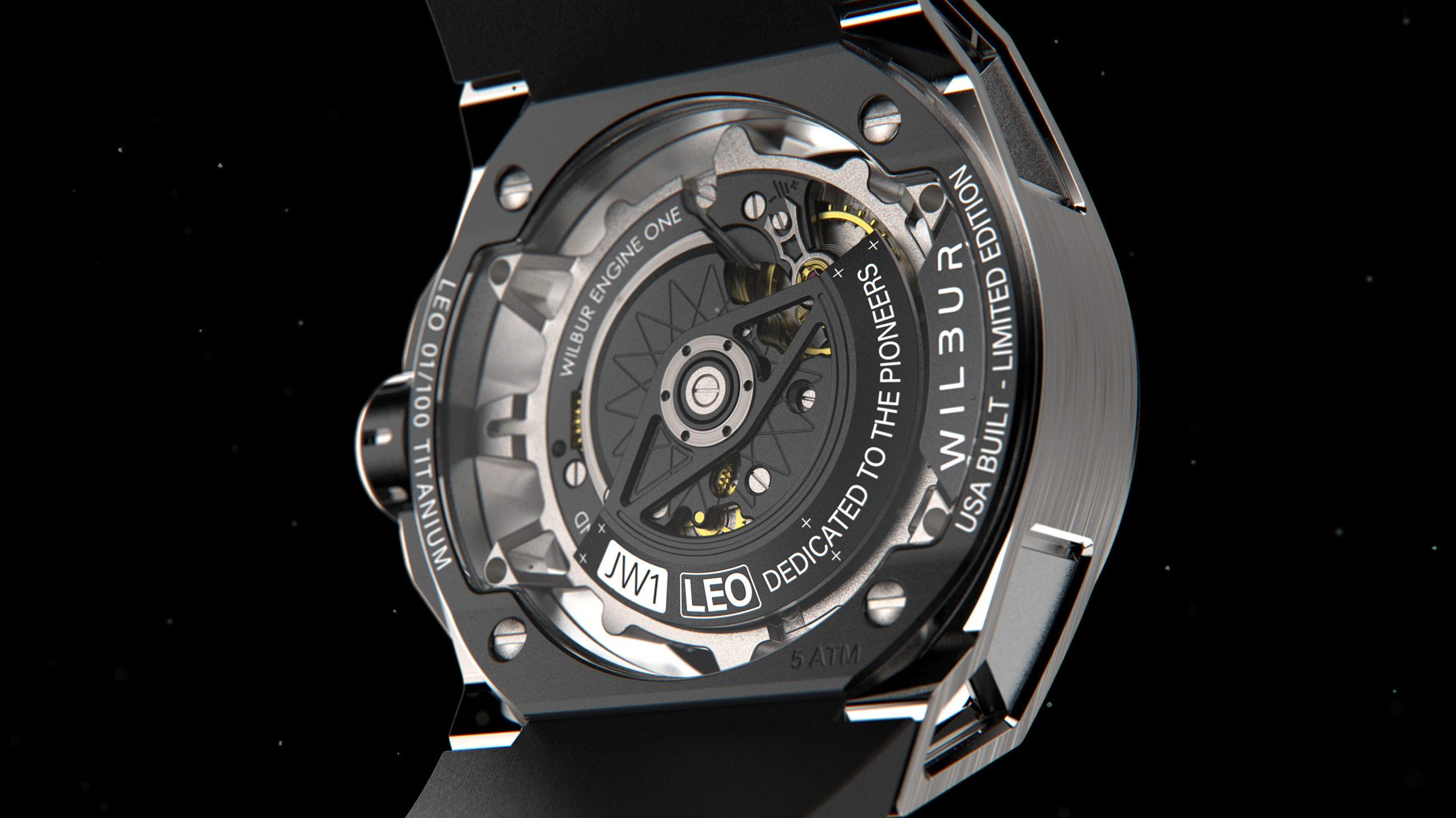
ABTW: It’s almost like an exercise in world-building.
WILBUR: Yeah, I ended up using that as a method later on when I taught classes at Art Center. I would have the kids do this exercise where I’d say, “Stop looking at Nike stuff. Do your shoe and then design the inspiration.”
Take the Devon watch. I was actually working on the first concepts of that in Art Center. That whole thing came from the idea of an open primary on a motorcycle where the belts were spinning around. I saw the belts spinning and they would be printed with the serial numbers. I thought, “That’d be really cool if there were numbers that could be used to tell time.” You just start riffing on that in your mind. That’s how you get addicted and end up looking online at all sorts of other belts like tank treads [laughs].
There’s a phrase that I like: “If you want to be the best poet on Earth, don’t read any poetry.” In order to be a great poet, you need to live a really interesting life. Otherwise, you’re just going to repeat what other people are saying and doing. Sometimes, if you learn the rules first, you’re at a disadvantage.
Like I said, the watches really came to me at Art Center and it just became an addiction to the point where I couldn’t sleep — I had to finish them. When I finished one, I’d have to start another one. It’s a little bit of an illness, for sure.
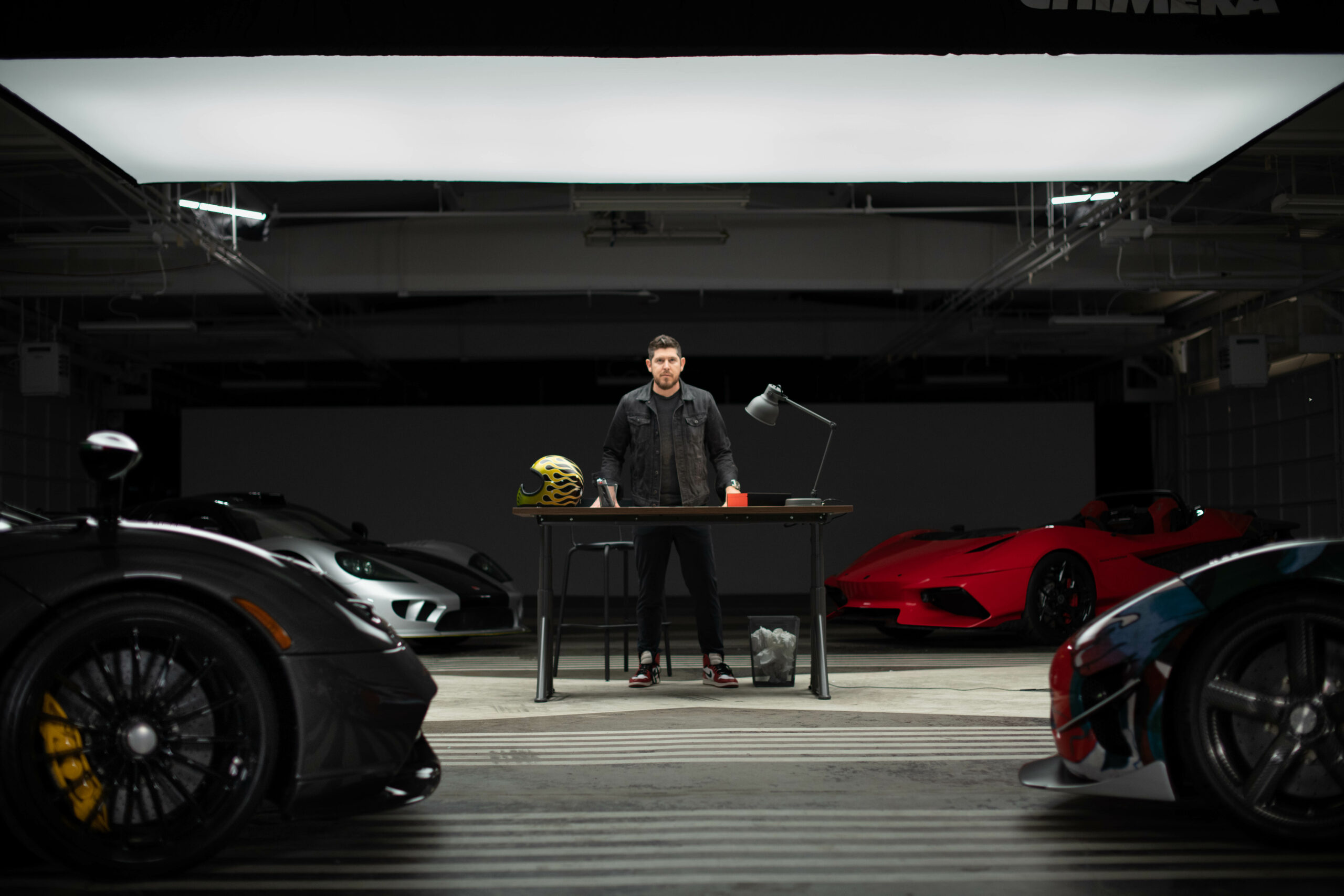
ABTW: You spent 10 years working at Honda doing automotive design and then consulting. You were living in this world of machinery, cars, and motorcycles so when you’re working on watch design, is it a conscious effort to integrate those things into the watch? Or does it just flow naturally out of the pen? Can you talk a little bit about how that happens?
WILBUR: I wish I could say that it flows naturally out of the pen. I feel like if it doesn’t hurt a little bit, it’s probably not worth it. What does flow naturally is my confidence in the ability to technically create something. When I’m designing something from the initial concepts, I’m not second-guessing whether it can be made or not. I tell designers this all the time, “Learn as much as you can about technical processes. Learn about how to make something.” Because if you’ve got an idea, figure out how to make it so that you can show somebody else that it can be done. Obviously, there’s a point where the realities of business come into play. It’s great if you can make something that is cool and functional, but if it costs $3 trillion, then it’s not going to work.
What I’ve been good at is blocking out noise. That’s something I had to learn in the professional industry. The creative side of an automotive business is very, very small. Even though they are celebrated in the press, the truth is that they don’t have a ton of support. I learned to be able to have thick skin. I learned to be able to push the boundaries and I’ve learned to be very honest about my design. But if I’m there to take risks and to take chances, then that’s the best way I can stay true. There’s an emotional aspect to this stuff, a maturity from a creative standpoint that allows me to push the limits but find a good balance.
From a technical standpoint, there are processes I use to create, everything from sketching to bringing something digitally into the computer. I’m climbing around inside my watches when I’m making them.
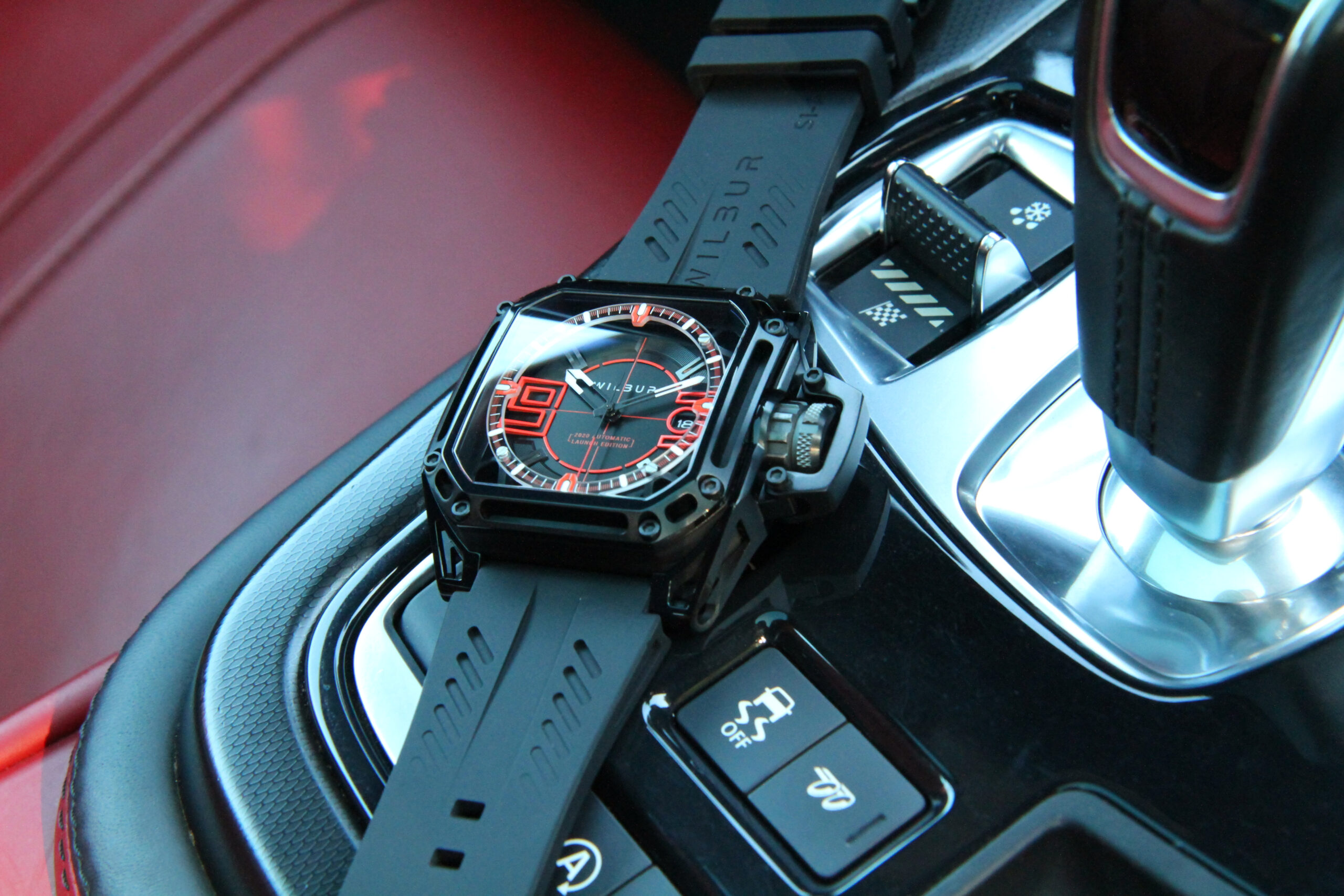
ABTW: When you’re doing that, are you taking — let’s say — the fixed measurements of a movement, or the position where the stem enters the movement and working around that? It sounds like with car design you really had free rein — you could create and create and create. But maybe it’s all within fixed parameters. Can you talk a little bit about how those fixed parameters show up in watch design?
WILBUR: When I know that I’m going to work with a certain movement, I definitely take a look at the dimensions. I’m looking at the technical drawings and I’m figuring out whether the stem is really low in the movement, or if it’s high because I know how that’s going to affect certain things. But I stop there. I don’t print out a picture of the movement because that’s where you can really start to get stuck. This is where I’ll do old-school sketches. I come up with a concept first—something I think looks really awesome—and then I start to build it in 3D. That’s where you’re really challenged to say, “How can I get something that has the same essence of that concept?” The idea is to show the purity of concept first, then go into the technical aspects. I’m always referencing the concept because I’m always asking, “Is it losing the emotional value? If so, why?” If you don’t have that initial concept, you never have a reference point. When you’re headfirst in this s***, you can sometimes forget the original concept you had in your head.
That’s one reason I constantly build watch models. I’ll 3D print it and realize it’s too big or too small. At that stage, I’m working on the ergonomics but I’m always going back to the pure concept.

ABTW: The last time ABTW checked in with WILBUR was in 2020. You’d just launched the brand and the Automatic Launch Edition was brand new. Almost three years on, what’s the story been? What paths have you taken?
WILBUR: When I made the Launch Edition, it was really a culmination of a lot of different things. Design-wise, I went back to my youth to think about the Seikos that I wore when I was a little kid. I thought about how even after all this time, they’ve basically got the same movement. It’s that sturdy NH35 movement that’s in everything. Sure, it’s changed slightly over the years, but you could dump sand into that thing, and it’ll work! I decided to build around that movement because it’s simple. I knew everybody was going to get super pissed off because it’s not Swiss, or it’s not expensive — but these are the “rules” that I was talking about earlier. It’s so fun because it’s the opposite of what you’re “supposed” to do.
There were several different things I wanted to hit with the Launch Edition. One was that I wanted to make sure that there was the automotive spirit. That’s why I love the exposed fasteners. It might look like random screws, but there’s nothing random about it—they actually hold things together. The Launch Edition was really meant to make noise. At the same time, I really wanted to produce something that was wearable on a daily basis that was very modular. One thing I thought was awesome in the automotive industry is the “speed shop” idea where you’re able to make different versions that are super limited. So because I’ve got this nine-part case, I can do all these different coatings. That allows me to constantly create limited editions. So the plan is to create a bunch of different limited editions that I call the Speed Shop Version. That experimental process is really cool. The idea behind the launch is you could do these limited small batches but they would have the level of haute horology: finishings and quality that set the tone for a new American luxury brand that’s going to be unlike anything else.
I’ve got a lot of designs on the books. I’ve now got drawers and drawers of watch designs — crazy s***. I’ve got watches that are V12-inspired with, like, 720 parts. I’ve spent years doing engineering and at some point, I’m going to make them. I’m just not going to give up. But those will be $3,000,000 by the time they’re done – kidding of course, but I’ve got big plans ahead for this brand and big ideas! Sometimes people think my watches are just a big “f*** you” to everybody. It’s really not. I’m just making my own thing. The coolest part is when somebody gets one, and they send a photo from their McLaren in Liechtenstein or something with a note of, “I love my Wilbur watch!” I love that so much because they’re so excited. As you can imagine, doing what I do, I get a lot of hate. So when I get some love, it’s awesome.
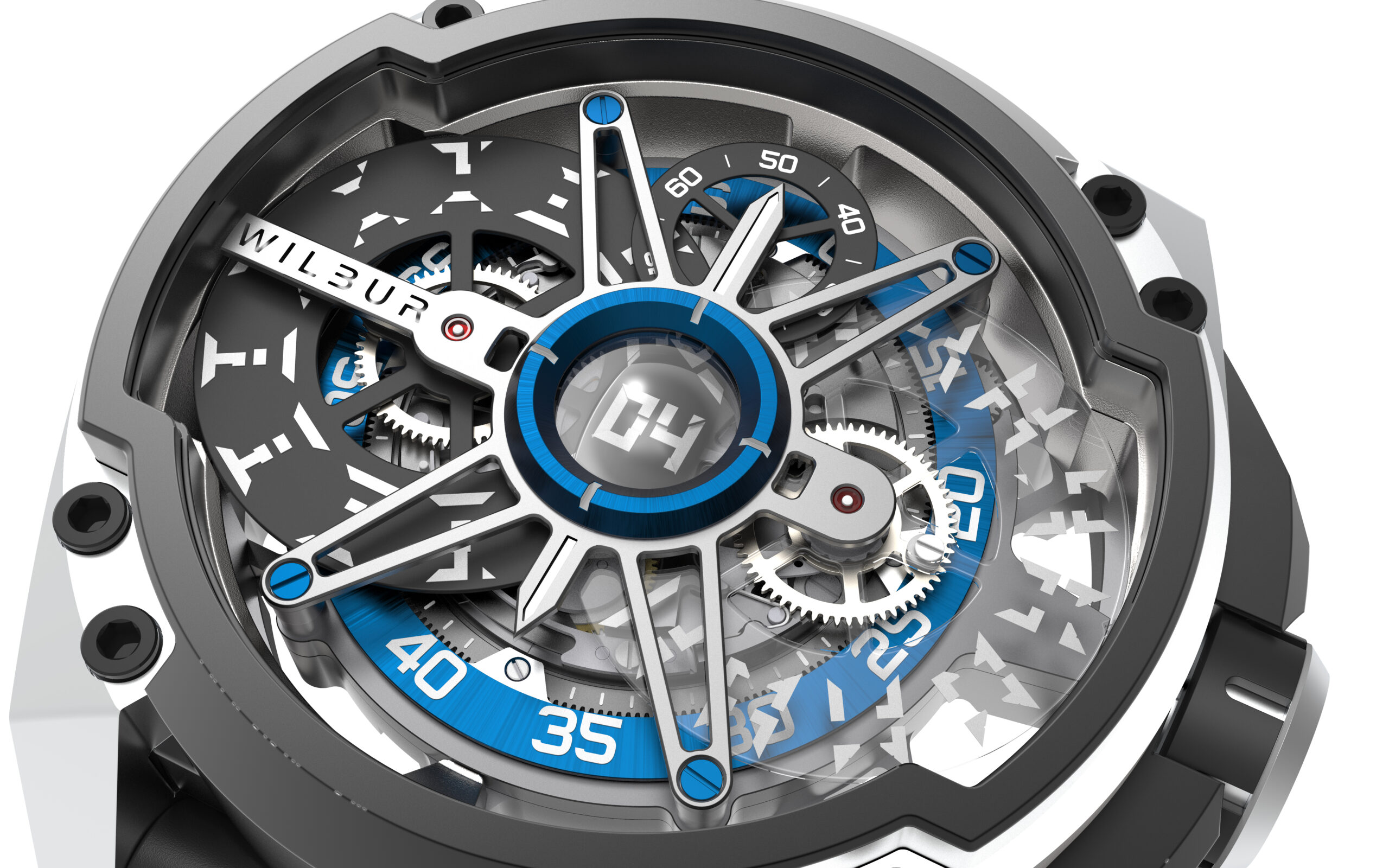
ABTW: I want to close out by talking about the LEO. How did that come to you?
WILBUR: Somebody told me one time that it was the worst idea. Guess what that means? It means I’m doing everything in my power to make this happen — I’ve been working on that watch for seven years. It’s very three-dimensional. It’s supposed to be a satellite spinning in space. In my mind, I’m climbing around inside it like a jungle gym. If I was 2mm tall, and inside it, it would need to be architecturally fun. I did 3D models of the case, multiple versions of the case, multiple movement layouts, and multiple everything. Then based on this one concept, I did 3D printed versions.
Here’s where the LEO story really comes from — the Roswell Incident. I got intrigued because the thing about the Roswell story that got everybody interested wasn’t that there was some spaceship or something. It was the fact that they found a piece of metal with symbols on the side and they had no idea what the symbols meant!
So, I started thinking about experimenting with numerals. We normally use either Roman numerals or other recognizable numbers and symbols when we’re telling time. And I was thinking about how when you see words in a language you’re not familiar with, it looks very foreign and unrecognizable, yet you know it’s a language system. I started thinking about how to take the actual numbers and deconstruct them into something that looks like a foreign system of language, so that when they come together — as puzzle pieces — they overlap and now become something very recognizable.
I created those symbols completely from nothing. During the process, sometimes they’d start looking too familiar. The “one” would look like a “seven” or the “five” just looks too much like a five. So, I’d have to start all over. You should be able to recognize them as part of the same symbol set, the same typography. It should come together as a family of pieces to make a “digital” outcome.
On the rotor, it says “Dedicated To The Pioneers.” For the movement itself, I’m working with the team at Concepto in Switzerland. So the movement itself is Swiss, but we’re building everything here in the U.S. and assembling everything in Scottsdale, Arizona. So it really is U.S.-built.
I keep going back to the fact that I’m making promises to take risks. That’s what people are buying. When they’re buying into WILBUR, they’re buying into a community. They’re buying a moment in time where somebody took a risk to make something fun and crazy. It’ll be perfectly executed — but it’s not going to be for everybody. It’s not going to be the essence of a watch in 2022 — it’s going to be the essence of breaking the rules in 2022.
Specifications:
Brand: Wilbur Watch Company
Model: LEO
Dimensions: 48.50mm diameter / 46mm bezel / 16.50mm-thick (not including lugs & crown)
Water Resistance: 3 ATM
Case Material: Titanium
Crystal/Lens: Sapphire Crystals w/ Anti-Reflective Coating
Movement: WILBUR Engine One Automatic Jump-Hour Movement
Frequency: 4Hz
Complications: Hours displayed on dual sapphire jump-hour disks shown under central sapphire mag / Minutes on hubless ring disc; fixed pointer on bridge; seconds on small disc; fixed pointer on bridge
Strap/Bracelet: Silicone Strap offered in black. Cordura strap optional
Price & Availability: $48,000 USD. Coming soon. Limited to 100 pieces.
Sponsored Posts are a form of advertising that allows sponsors to share useful news, messages, and offers to aBlogtoWatch readers in a way traditional display advertising is often not best suited to. All Sponsored Posts are subject to editorial guidelines with the intent that they offer readers useful news, promotions, or stories. The viewpoints and opinions expressed in Sponsored Posts are those of the advertiser and not necessarily those of aBlogtoWatch or its writers.

